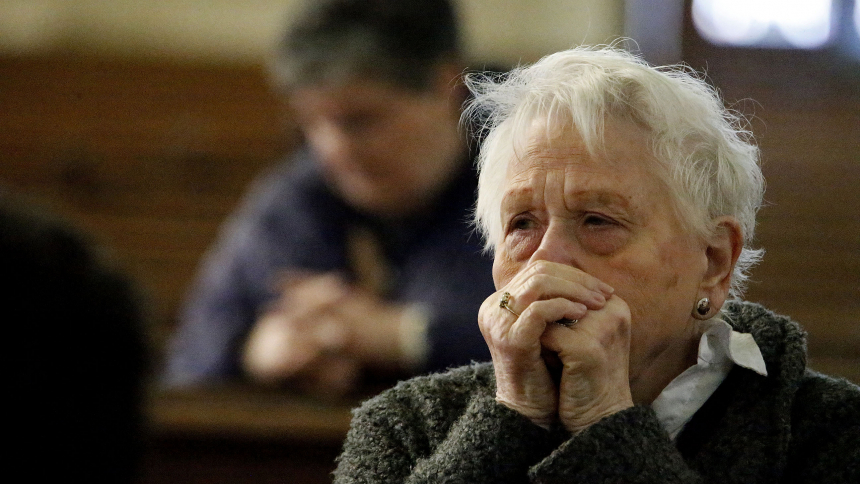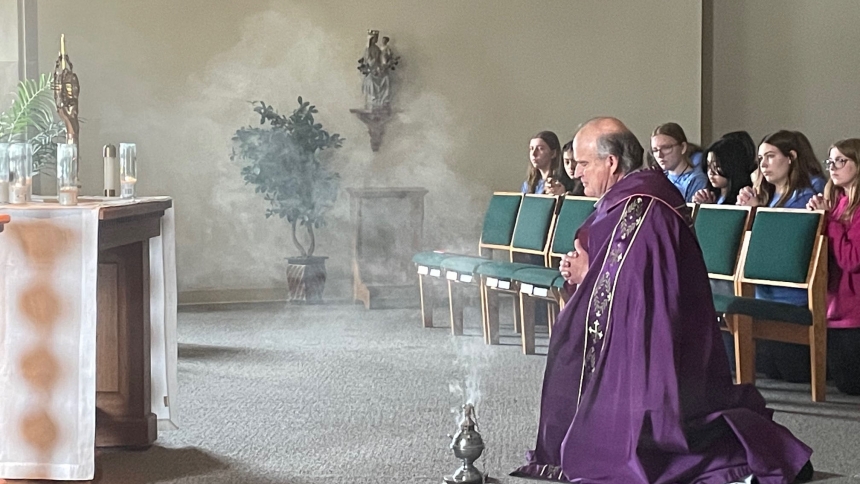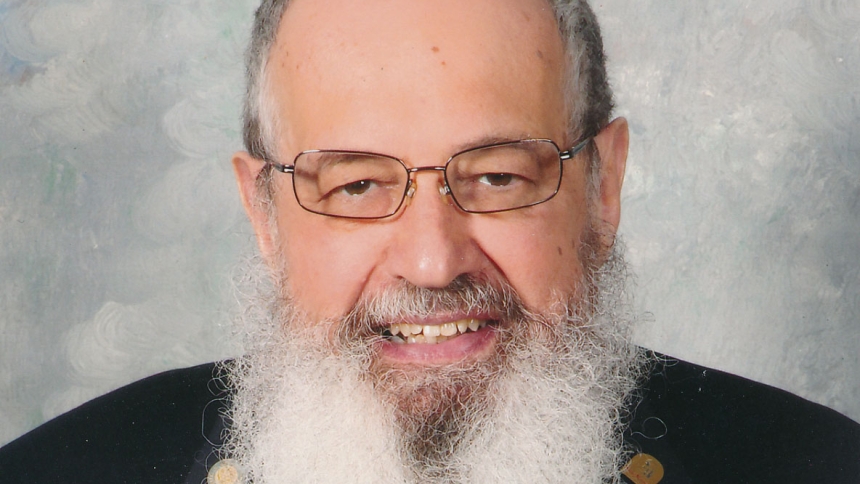
MICHIGAN CITY – “It was beyond amazing. People had tears running down their faces.” That’s how Jeff Duszynski, a parishioner of St. Stanislaus Kostka Catholic Church and the parish organist, described people’s encounter with the relic of the True Cross of Christ’s Crucifixion.
Nearly 200 people, from the young to the young of heart, came from throughout the Diocese of Gary and surrounding areas for an opportunity to venerate the relic at the church on April 2.
Duszynski, along with Camille Higdon, were the driving forces for hosting the veneration and were thrilled with the turnout. “I was pleasantly surprised to see the quantity of people from all walks of life. It was very eye opening to see how much faith there still is. Not many churches have something special like this,” said Higdon.
The relic is part of a larger collection at the Michigan City parish, which includes multiple relics of Christ’s Cross. Many of the relics belong to the parish’s pastor, Father Walter Ciesla.
Father Ciesla presented a reflection on the death of Christ based on the Shroud of Turin to conclude the nearly three-hour veneration. He began the talk by detailing information about the Shroud itself.
The Shroud of Turin is an ancient burial cloth containing the front and back images of a scourged, crucified man whom many believe is Jesus Christ.
Father Ciesla suggested it can be seen as “the relic of the crucifixion, but also of the Resurrection. It’s remarkable because it’s a gift of God to all of us showing us the tremendous suffering our Lord endured.”
He continued, detailing the scourging by the Roman soldiers. While Jewish law permitted an offender to be subjected to no more than 50 lashes, Roman soldiers beat Jesus “mercilessly until they were tired” using a whip called cat of nine tails. The whip was made of leather strips with lead weights or sharp pieces of glass attached that would rip into the skin each time a lash was applied.
Scientists looking at the Shroud maintain the victim was scourged from the neck to the soles of his feet over 600 times, according to Father Ciesla. “Jesus must have been unrecognizable after his brutal scourging. His entire body was a bloody mess as our Lord was stripped naked, His hands tied above him to a post,” he said.
As if the scourging wasn’t enough, soldiers would take part in a game where they would take turns inflicting horrible torture on a condemned prisoner for amusement. Evidence suggests that Jesus was subject to this torturous game.
Father Ciesla explained the crown of thorns was more of a helmet of thorns that covered the whole head after it was pounded on until it reached a level near the eyes. He noted some evidence of the Shroud indicates possibly one of the thorns pierced one of the eyes.
Although it was believed that Jesus carried the entire cross, He actually carried just the cross piece. Due to blood loss, shock, infection and fatigue, Jesus fell several times under the weight of the heavy beam, landing face first into the stone pavement.
At the site of the execution, Jesus would have been thrown to the ground and spikes driven through his wrists into the cross piece, which would have created an “explosion of pain.” The beam would have been raised and dropped onto the upright, leaving the victim hanging from the nails through the wrists and feet. The weight would have made it difficult to breathe which would have resulted in death caused by asphyxiation.
“One cannot imagine the unbearable pain endured by Jesus Christ,” said Father Ciesla. “Crucifixion was the cruelest and most painful death the Romans knew.”
Duszynski and Higdon shared that they both were grateful for the response to the relic. Deep reverence and emotions were displayed by those attending.
Joann Dillard, of Michigan City, left no doubt she was touched by her encounter with the relic as her tear-filled eyes released a stream of tears down her cheeks.
“Very moving. I was crying. I felt really close to Christ, and I’m so sorry that I have done wrong,” said Dillard. “It was surreal. It was like you were there, almost.”
She said that although it was a tiny piece of the cross, she could almost feel the weight of the cross. She explained her younger brother, Mark Sobecki, recently died.
“The timing of veneration was right on, God’s timing. Sometimes I questioned God, especially after Mark’s death. I wasn’t sure about anything, but now I am,” said Dillard.



